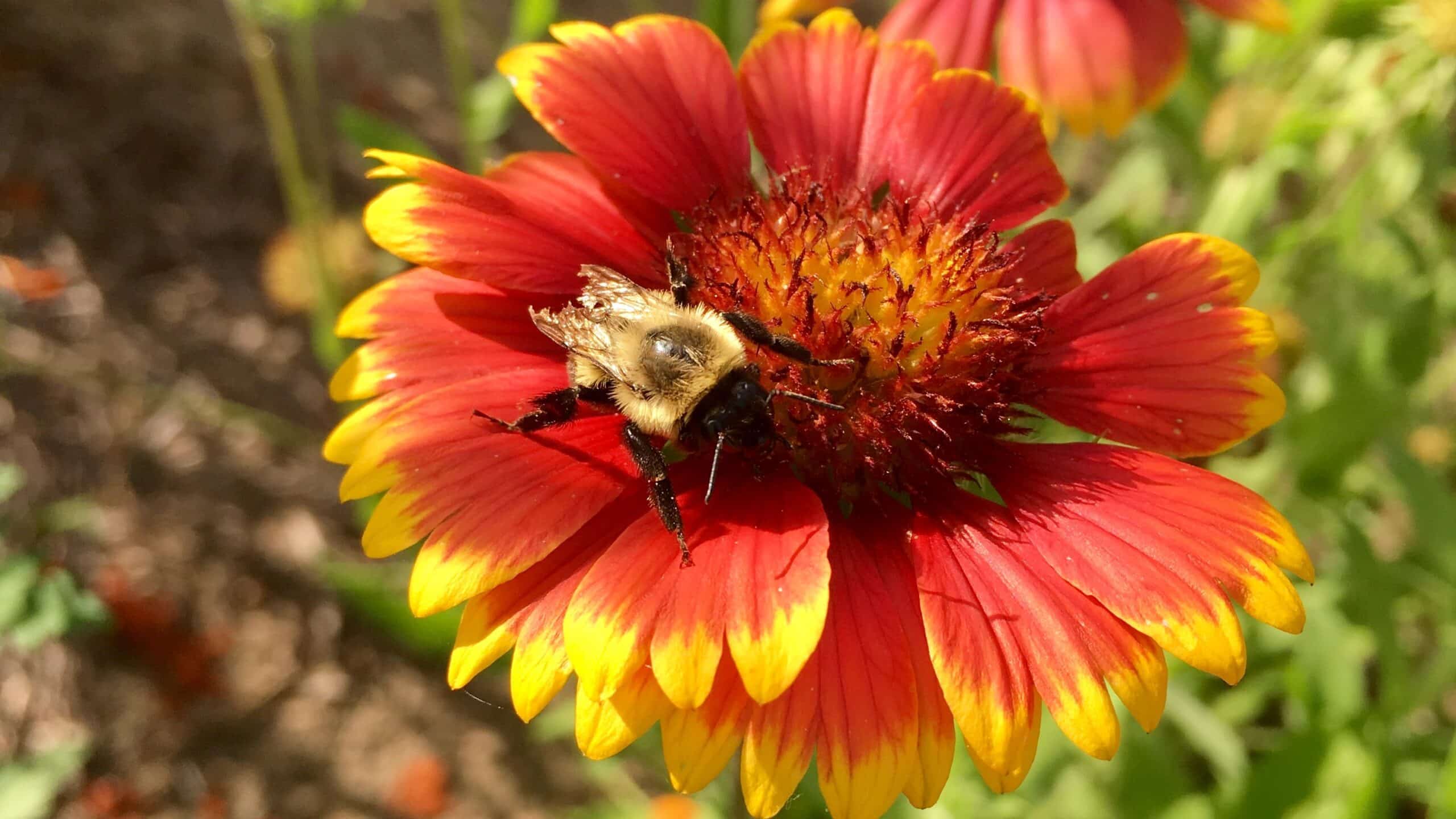Wildflowers Near Lawns Can Increase Bee Abundance

Editor’s note: This blog post is part of a series of interviews with NC State University experts exploring whether homeowners in North Carolina could make a difference for pollinators through lawn and garden design, maintenance or planting.
While lawns can provide pretty good homes for spiders, ants and some beetles, if you want to attract pollinators, planting strips of wildflowers nearby is the way to go.
In a recent study, NC State researchers found they could increase the number of pollinators – including honeybees, sweat bees and 27 other bee species – visiting six home lawn or golf course sites in North Carolina by planting wildflower strips nearby. The findings could help researchers develop plans for boosting habitat and food sources for pollinators as urbanization increases.
The Abstract spoke to the study’s lead author, Terri Billeisen, NC State Extension associate and adjunct assistant professor in the entomology and plant pathology department at NC State University, about what the findings mean for homeowners with traditional lawns who want to boost habitat and food sources for pollinators and other beneficial insects. Billeisen also provided insights into other strategies that have been proposed for helping pollinators, like the “No Mow May” initiative.
“Lawns are such a prevalent part of our culture,” Billeisen said. “Even if lawns don’t provide as much habitat or food resources for pollinators as a completely naturalized landscape might, we are looking into ways to create spaces or maintain them to improve their impact on pollinators – such as by incorporating wildflower plantings, or increasing ornamental plants within a landscape or even by reducing some of the maintenance practices to lower their impact on pollinators.”
The Abstract: What kind of biodiversity did you find in turfgrass areas versus wildflower beds in your study?
Terri Billeisen: Based on research we’ve seen before, we suspected that pollinator activity in turf systems, without the flowers, would be minimal, and it was. We surveyed pollinators at golf courses and home lawns in 2018 before we created the wildflower gardens at these six sites, and then afterward in 2019. We found the number of species almost doubled from before the wildflowers were planted to after.
TA: When did you see the most pollinator species?
Billeisen: Based on our research in North Carolina, I’ve seen that we get some pollinator activity in spring and early summer, but we really didn’t get the bulk of it until July or August at the six sites we looked at.
TA: Does it matter which flowers you planted?
Billeisen: We used 20 flowering plant species in our study. It was a mix of native and non-native flowers. When you plant specific plants, you’re only going to attract certain bees.
TA: Are there any insects that like turfgrass?
Billeisen: There are a number of beetle species, spiders and ants that do well in a turfgrass environment. These are all predators that will feed on pest species in the environment, like white grubs, reducing the need for insecticide applications.
When you compare turf to other urban ground spaces, it really depends on the types of insects, but some tend to do really well in urban environments, and some do not do as well. We do have a lot of beneficial arthropods that exist in a turf landscape. Typically, turfgrass is going to support a larger, more diverse population of arthropods like ants, beetles and spiders than other inexpensive ground covers like mulch or areas of soil where you’re not getting plant growth.
TA: What do you think about the “No Mow May” initiative as a means to boost pollinators specifically? Do you see some pollinators thriving in turfgrass?
Billeisen: If you have a lawn with a lot of weeds incorporated with that turf, this is where the concept of “No Mow May” comes from. You will get bee visitation on weeds that will flower in the spring like clover or dandelions. Typically, with well-maintained turf lawns, you don’t get much of those flowering weeds – people put down chemical inputs to prevent those weeds from existing. If you have that situation, you’re not going to get pollinators unless you have flowering ornamentals elsewhere in that landscape.
TA: Are there other ways homeowners can think about helping pollinators on their properties?
Billeisen: More than the plant species present in a plant system, it’s the maintenance practices that have the biggest impact on biodiversity. Repeated use of chemical inputs, whether it be pesticides or fertilizers, tend to have more of an impact not just on pest species and plant stress, but also on the beneficial species as well. Especially if you’re using insecticides. Really altering the way we manage landscapes is going to have the most immediate impact. A lot of people talk about mowing, but adjusting the over-reliance on pesticides or fertilizers, that is going to go a long way toward improving biodiversity.
- Categories:


